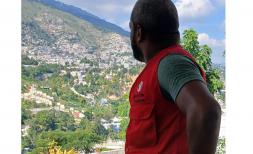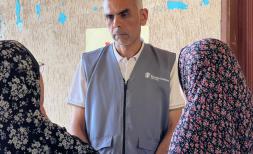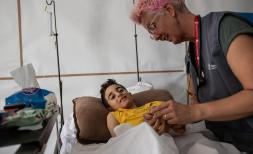“I was scared when my mother and sister were sick,” Nazib’s story

Nafisa* (25) was the first COVID-19 patient at Save the Children's isolation treatment centre in Cox's Bazar
When violence erupted three years ago in Myanmar, Nafisa and her family – along with more than 700,000 other Rohingya – fled to Bangladesh in search of safety. Since then, they have been living in the Rohingya refugee camps.
Now Nafisa and her children face another enormous challenge – the global COVID-19 pandemic. Her children have not been able to go to school and her husband has been unable to work, which has placed the family under enormous financial pressure.
Despite Nafisa’s best efforts to follow the guidelines to reduce her family’s risk of contracting the virus, Nafisa became sick and tested positive for COVID-19, and her six-year-old daughter also had symptoms. When she received the test results, Nafisa and her three children were taken to Save the Children’s isolation and treatment centre where they received treatment.
“They gave us medicine, food and toys”
Nafisa’s eight-year-old son, Nazib joined his mother and siblings when they visited the isolation treatment centre.
“When my sister and mother were sick and taken to hospital, I went with them. They gave us medicine, food and toys to play with. I was scared when my mother and sister were sick. I felt good on the day we were released from the hospital.
“I used to go to school, but I have not been able to go to school and play (because of the COVID-19 restrictions). My father has not been able to go to work to earn money. We haven’t been able to eat good food.
"I wash my hands with soap and wear a mask. I don’t play with others and don’t get too close to others."
“We did as much as we could to be clean”
We also spoke to Nafisa, Nazib’s mother, who said: “There are only four toilets here (in Nafisa’s area of the camp) and those are already full. There is no separate bathing space here. It is very difficult to live here. How could we be hygienic in such a situation?
“As part of the preparation, we washed our hands with soap and kept clean. I kept my children neat and clean and also kept the house clean. We did as much as we could to be clean. I have done everything.
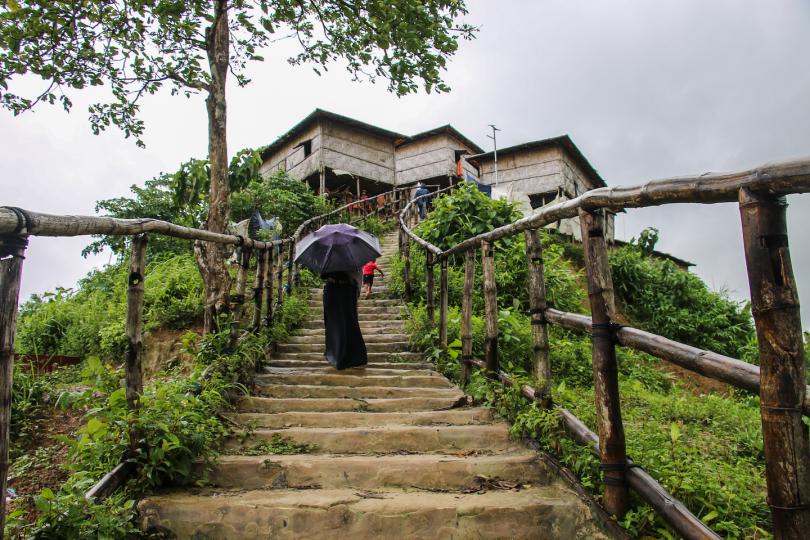
“They (Save the Children’s medical staff) treated me well and took good care of us. They also gave my children and I mental health support so we could stay strong. They talked to us nicely, gave us good food. They provided us with all the support we needed. They did everything for me there.
"The problem for us is that my husband could not go far for work. The children cannot go to school as the schools are closed now. They spend their time at home. They only go to the madrasa (to learn Quran), but they are not doing the actual lessons. And that’s really a problem."
Our isolation treatment centre
Save the Children is one of the leading International aid agencies in Cox’s Bazar, Bangladesh, having reached more than 600,000 Rohingya refugees and members of the host community, including over 400,000 children since the escalation of the crisis in August 2017.
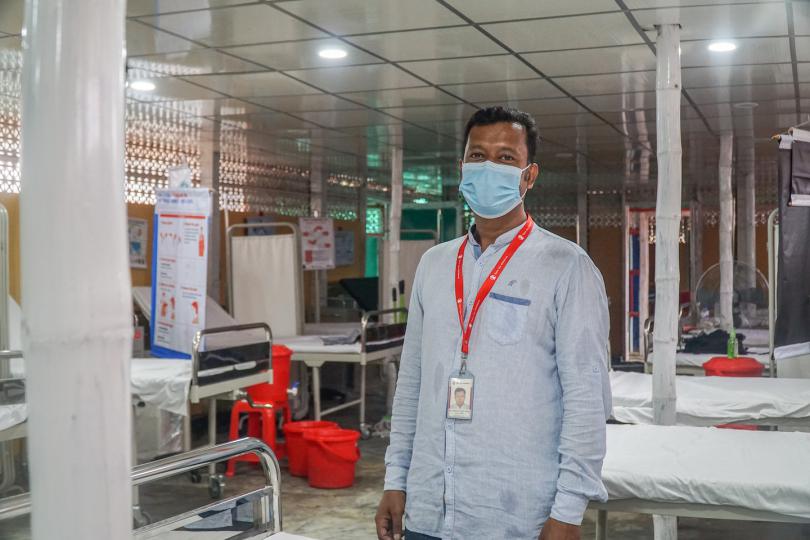
Save the Children's COVID-19 isolation and treatment centre in Cox's Bazar, Bangladesh
We deployed our Emergency Health Unit – a team of global health experts with extensive experience in disease outbreak management – to Cox’s Bazar in May to set up and run the isolation treatment centre. It has 54 inpatient beds, five stabilisation beds and a delivery area. Save the Children’s COVID-19 response in Cox’s Bazar also includes community-based surveillance and home-based care for children and adults with suspected cases of COVID-19.
Read more about our Rohingya emergency response.
